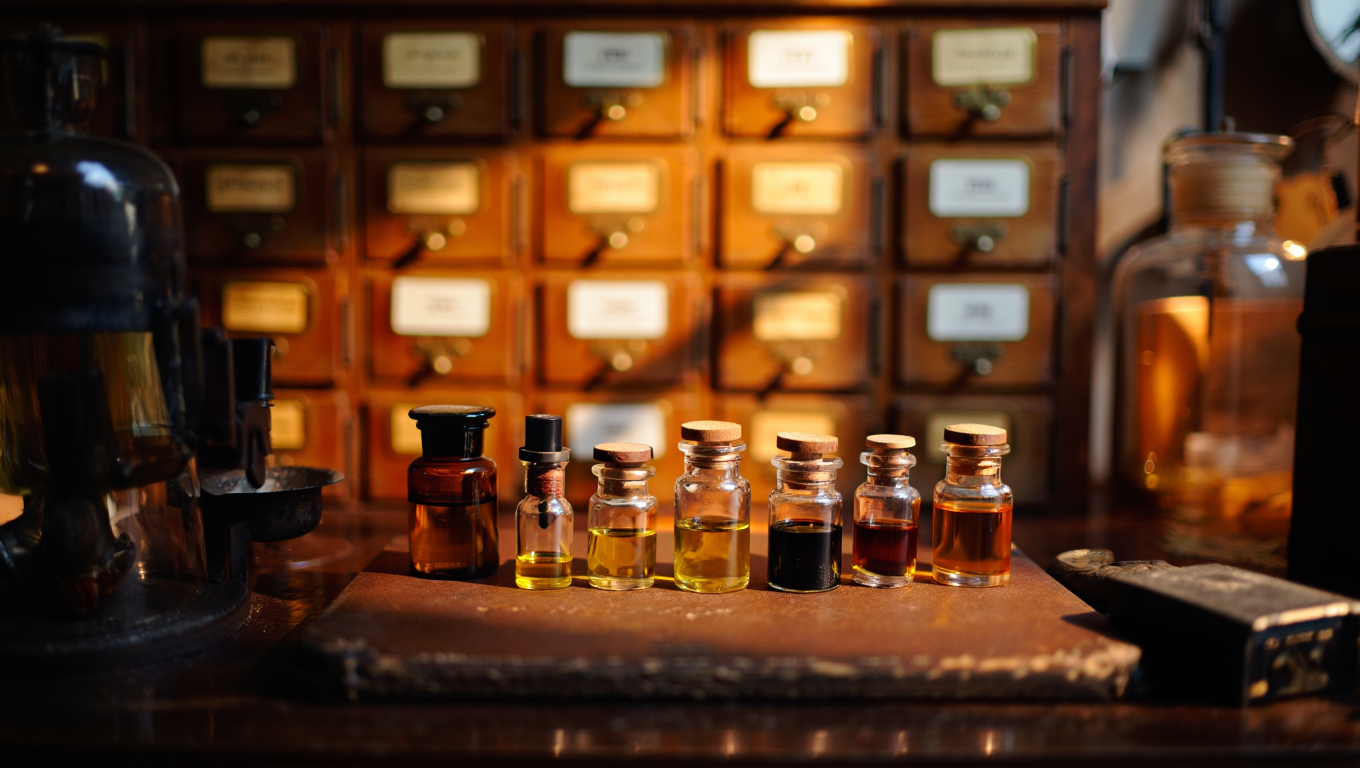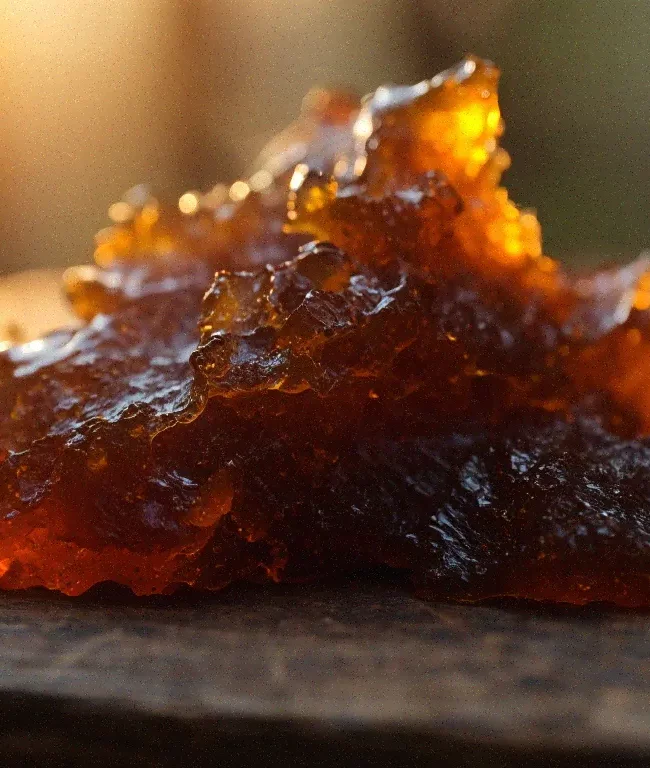
Types of Perfumery Materials: Extraction Methods and Production Processes
Infusion: The Tincture Method
The variety of perfumery materials used today is closely linked to the methods by which they are produced. Historically, one of the oldest and simplest ways to obtain a raw aromatic substance was by infusing fragrant materials into a solvent. In ancient times, this might have involved resins infused into carrier oils (for example, frankincense or myrrh in olive oil). In modern practice, the most common form of such infusion is a tincture — an alcohol-based extract, primarily used with solid animal materials like ambergris or Hyraceum (also known as Africa Stone), though occasionally it is also made from plant-derived resins such as galbanum or olibanum.
Steam Distillation
Another traditional and still popular method is steam distillation. During this process, water vapor passes through the raw material, carrying the volatile aromatic compounds with it. As the vapor condenses, it forms an essential oil (or aroma oil). However, these oils can sometimes be quite crude — either possessing harsh, heady top notes or dense, heavy base notes. Fractional distillation can further refine these essential oils by separating volatile and heavier molecules from the “heart” fraction of the distillate, which comprises molecules of medium volatility. Materials produced in this way are often labeled as Patchouli Fractions or Olibanum Coeur (“coeur” being French for “heart”). While these fractions are more refined than a raw essential oil, they remain relatively robust compared to isolates, which modern perfumery employs with increasing frequency.
CO₂ Extraction
As chemistry progressed, new extraction techniques emerged. One notable example is CO₂ extraction, wherein liquefied carbon dioxide acts as the extracting agent. Thanks to CO₂’s unique solvating properties—such as its ability to penetrate the material at relatively low temperatures—this method produces an oil somewhat similar to an essential oil, yet with a broader range of aromatic molecules. On a mass spectrum, CO₂ extracts often show a richer diversity of components, leading to a more extensive aromatic profile. These materials are typically labeled as CO₂ extracts or essences.
Extraction with Volatile Ethers
Other solvents — such as volatile ethers — can also be used for extraction. While these solvents effectively dissolve both essential oils and heavier resin components, they evaporate quickly, leaving behind a thick, resinous concrete or resinoid. A resinoid can be dissolved in alcohol for direct use in perfumery, but it often contains a large number of non-aromatic gums and resins that do little for the scent profile and can cause cloudiness or sediment in alcoholic solutions.
Absolutes
The portion of a resinoid that fully dissolves in alcohol is termed an absolute. Absolutes are typically produced by dissolving a concrete or resinoid in ethanol, distilling or filtering the solution, and then removing the alcohol under vacuum. The resulting absolute has a stronger aroma than the original concrete or resinoid and offers a richer aromatic profile than an essential oil. Furthermore, the presence of heavier, fixative molecules allows it to evaporate more slowly. Absolutes are often thicker, more viscous liquids and have become indispensable in modern perfumery; however, their production costs can be quite high.
Synthetic Molecules and Isolates
In contemporary perfumery, cost considerations have led to the widespread use of synthetic molecules and isolates. The key difference is that synthetic molecules are created through chemical synthesis, whereas isolates are separated from natural essential oils via additional fractionation steps. Both synthetic molecules and isolates typically consist predominantly of a single aromatic compound, although their olfactory nuances may vary due to different impurities. For example, synthetic ambrettolide is very similar to its natural counterpart (isolated from ambrette seed oil) but has more noticeable “synthetic facets.” The natural version, by contrast, has a smoother, more natural tonality but can cost twice as much.
The Role of Isomers
Another factor affecting synthetic materials is the ratio of isomers in the final product. Even though a material might have the same CAS number, different manufacturing routes can lead to varying isomer ratios, each with a slightly distinct aroma profile. As a result, you might encounter multiple trade names for products that are essentially the same molecule but differ in texture, scent subtleties, or physical properties. For instance, Ambroxan® primarily comprises one isomer and crystallizes into a powder, whereas Ambrox DL®, a mixture of isomers, is more paste-like in consistency.
Natural Isolates
Natural isolates rarely exhibit such pronounced variability in isomer content. However, their scent can still differ in subtle facets if one producer sources eugenol from anise oil and another from clove oil, for example. Manufacturers often disclose the botanical source to indicate these nuances in the final material’s aroma.




